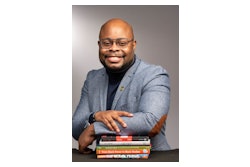Young women are rightfully fed up with how college and university administrators handle sexual assault, and there is no better example than the protests currently happening at the University of Nebraska Lincoln.
Last week, a 17-year-old freshman girl was raped, beaten, and left on the front lawn of the Phi Gamma Delta fraternity house by a 19-year-old male student. The fraternity, also known as Fiji, has a history of sexual assault on the campus well known to both the students and administrators. In 2017, Fiji was given a multi-year suspension following an investigation that concluded the fraternity had engaged in misconduct that “included reckless alcohol use, hazing and inappropriate sexually based behavior, including a pattern of sexually harassing conduct.”
This incident comes at a time of year on college campuses known as the “Red Zone,” the first weeks of the fall semester when campus sexual assaults are most likely to occur. More than 50% of all of the sexual assaults that will occur during the school year happen between when students arrive on campus and Thanksgiving break. Freshman and transfer students are most likely to be victimized during this time because of their inexperience with college life and campus party culture and an absence of a tight-knit social circle who will watch out for them. Tracey Vitchers
Tracey Vitchers
This year was already predicted by experts to be a “Double Red Zone” because of the COVID-19 pandemic. Institutions of higher education reopening after a year of remote learning will be welcoming a new class of freshmen to campus. These freshmen are also joined by students who are academically sophomores, but are socially freshmen because they “zoomed” their first year of study remotely. Combine two classes of students who are new to campus with returning juniors and seniors anxious to make up for lost time partying with friends, and colleges have a crisis of sexual assault on their hands.
The Double Red Zone prediction is terrifyingly becoming a reality on college campuses, as exemplified by what’s going on at the University of Nebraska Lincoln campus. It’s also sparking a resurgence of on-campus anti-sexual assault activism in a post-pandemic world. Thousands of students have shown up at the #ShutDownFiji protests at University of Nebraska Lincoln. What feels different this time is that not only are the young women on campus organizing in support of the survivor, they are also demanding accountability from both the institution and men on campus for the prevention of sexual assault. A post on the @ShutDownFiji Instagram page reads, “We want to emphasize that the #shutdownfiji movement is an attempt to hold UNL accountable for their culpability in the sexual assaults that have happened at Fiji over the last four years.”
Their demands speak to the failure of most colleges and universities to hold themselves and their campus community accountable for facing tough truths about what it will take to end campus sexual assault. If University of Nebraska Lincoln and other institutions truly want to prevent campus sexual violence, they can begin by engaging young men in preventing sexual violence and to holding those who perpetrate violence accountable for their actions.
As a society we’ve accepted the awful reality that 1 in 4 young women will be sexually assaulted during their time on campus. The truth colleges and universities need to confront in their prevention efforts is that the vast majority of these sexual assaults are committed by young men who are also a part of the campus community.
Most colleges avoid acknowledging this fact in their prevention education programs in a misguided effort to not make men feel bad, or that they may be a part of the problem of campus rape culture. This approach prioritizes the psychological comfort of young men over the physical safety of young women, which ultimately undermines any effort to create a violence-free community. Institutions need to be honest about the fact that a potential perpetrator of campus sexual assault could look and act like the clean-cut, overly friendly guy from a student’s Econ 101 class, rather than a nameless shadow figure who follows a girl home from the bar at night.
This is not to say that schools should be labeling all college men as potential rapists. Research shows that most young men will never commit an act of sexual assault during their time on campus. But if schools are going to truly work to prevent sexual assault, they cannot continue to ignore the data that indicate 85% of survivors know their perpetrator. And, guess what? Young men on campus know the perpetrators too. They just don’t know how to intervene when they see the signs of sexual harassment or potential assault because they haven’t received a proper education in prevention. Requiring students to hurriedly click through an online sexual assault awareness and bystander intervention training before they can register for classes isn’t prevention - it’s institutional risk management.
Additionally, the rape-avoidance “talk” for young women focused on self-policing their clothes and behavior has become a normal part of their college experience. But similar talks with young men about steps they must take to prevent assault, such as lessons on consent and bystander intervention, are not happening frequently enough. When colleges and universities emphasize rape avoidance over prevention in their messaging, they simultaneously uphold structural sexism and ignore the role young men can play in combatting sexual violence.
College men are often in the best position to be a part of the solution if they are educated on sexual assault and the role they can play in preventing it. They know which teammate brags about his questionable sexual encounters in the locker room. They can easily tell you which fraternity brother drinks too much at rush parties and makes aggressive, uninvited passes at freshman girls. But most young men do not feel empowered to intervene because of a combination of peer pressure, lack of education and skill building, and lack of institutional accountability for those who commit sexual violence.
It’s also not sufficient for colleges to solely invest their efforts in support services for survivors. Supporting survivors is critical. However, institutions will not solve campus sexual assault if they are focused only on mitigating the consequences, and not addressing the causes. A comprehensive approach includes both support and prevention on campuses. And, prevention includes removing, either temporarily or permanently, students and student groups who perpetrate sexual assault. Being a part of a campus community is a privilege, not a right, and colleges do a disservice to the safety of all of their students if they allow those who have been found to have committed sexual assault through a Title IX process to continue live and learn among their peers. In not removing a perpetrator from campus they risk the student perpetrating again and they send the harmful message to other students that sexual assault isn’t a serious enough infraction to warrant suspension or expulsion.
With the Double Red Zone this fall, it’s time for colleges and universities to start having tough conversations about the roles men can play in both enforcing and combatting campus rape culture. It’s time for schools to start acknowledging the ways they uphold institutional sexism in how they approach sexual violence prevention. It’s time for the higher education community to commit to creating a culture of prevention and accountability.
Tracey Vitchers is executive director of It's On Us, a campus sexual assault prevention organization launched by then Vice President Biden during the Obama Administration.


















